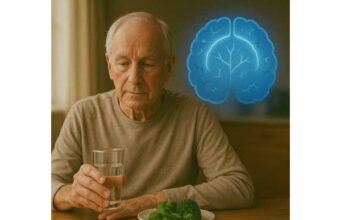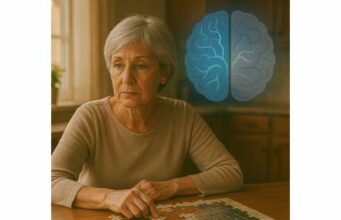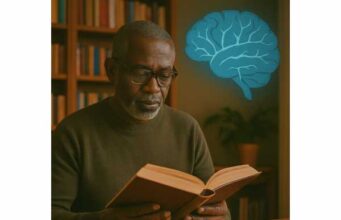Brain Health
Home Brain Health
Cognitive Longevity: Protecting Memory and Mental Performance
Cognitive longevity is the art and science of maintaining clear thinking, steady mood, and reliable memory across a long life. Genetics matters, but daily choices shape the brain far more than most people realize. The goal is not to “hack” the mind with quick fixes, but to preserve neural networks, blood flow, and sensory signals so you can keep learning, deciding, and enjoying complex activities. In this guide, you will find practical strategies organized by the systems that support cognition: vessels, metabolism, inflammation, senses, movement, sleep, and meaning. Each section translates research into doable steps, with attention to trade-offs and safety. If you want a broader roadmap for extending healthspan, see our evidence-led category on longevity guides for living longer and healthier. Then return here to build a personal plan that strengthens memory today while protecting future independence.Table of Contents
Read the complete Longevity Brain Health Guide
What cognitive longevity means
Cognitive longevity means sustaining the brain’s core abilities—attention, memory, language, planning, and social understanding—across decades while reducing the risk of dementia. It is not one habit or supplement; it is a framework for protecting the biological systems that thinking depends on: blood vessels, neurons and glia, myelin, the blood–brain barrier, and the sensory organs that feed the brain accurate information. When those systems work, daily tasks feel smoother: names return faster, decisions take less effort, balance feels stable, and mood is resilient. Think of your brain like an orchestra. Neurons are the musicians, white matter tracts are the timing cues, blood flow delivers oxygen like a steady power source, and senses bring in the score you read. If any section falters—blood pressure runs high, hearing fades, inflammation smolders—the performance suffers. Cognitive longevity combines small, sustained improvements in each section rather than chasing a single “first chair.” Three principles organize the approach:- Preserve the hardware. Keep vessels flexible, protect myelin, reduce chronic inflammation, and support the blood–brain barrier. This means managing blood pressure, glucose, and lipids; moving most days; and prioritizing sleep and oral health. It also means reducing exposure to head injury, toxic substances, and unnecessary anticholinergic medications that dry secretions but can cloud thinking.
- Upgrade the software. Build “cognitive reserve,” the brain’s ability to work around damage, through learning, bilingual practice, music, and complex skills. Diverse, effortful learning adds backup routes for problem-solving and retrieval.
- Align the environment. Hearing aids, good lighting, contrast, and safe walking surfaces reduce the cognitive tax that comes from straining to perceive the world. Social connection and purpose supply motivation, which is the jet fuel for neuroplasticity.
How memory changes with age
Normal aging reshapes memory in uneven ways. Working memory (holding a phone number) and processing speed slow gradually. Episodic memory (remembering where you parked) may need more retrieval cues. Semantic memory (facts and vocabulary) often stays strong or even grows. Executive functions—planning, switching tasks, inhibiting distractions—become more sensitive to poor sleep, stress, and illness. These shifts reflect micro-changes in white matter connectivity, neurotransmitter tone, and vascular supply, not inevitable decline into disease. Distinguishing cognitive aging from dementia is central. In typical aging, you misplace keys but find them when you retrace steps; you forget a name but recall it later; function in work, money management, and daily living remains intact. In dementia, memory failures are frequent, progressive, and impair independence—bills go unpaid, appliances are misused, routes home are lost. When in doubt, track changes over months, ask people who know you well, and seek a clinical evaluation. Early assessment can reveal treatable causes—thyroid issues, B12 deficiency, depression, sleep apnea, medication effects—and set a baseline for comparison. What accelerates decline? Uncontrolled high blood pressure, insulin resistance, smoking, sedentary time, hearing loss, chronic stress, and social isolation. What slows it? Regular physical activity, blood pressure and glucose control, hearing and vision support, meaningful relationships, and cognitively demanding hobbies. Expect variability across days; capacity is not a fixed number but a moving target influenced by sleep, mood, pain, and sensory load. Testing your own memory wisely helps. Use structured check-ins: a monthly note on names, navigation, focus, and task switching; a short reaction-time or dual-task balance test; a review of mistakes that mattered (missed payments, unsafe driving maneuvers). Pair this with a plan: if a metric worsens twice in a row, adjust sleep, exercise, or appointments. For a deeper primer on the difference between cognitive aging and disease risk—and how to interpret early signs—see our guide on brain aging versus dementia risk. Finally, be cautious with self-labels. Calling every slip “senior moments” can become a nocebo that reduces effort. Instead, note patterns, adjust inputs (sleep, stress, hydration, hearing), and use tools: reminders, checklists, and consistent places for essentials. Memory is a system; when you support its parts, performance improves. Back to top ↑Build cognitive reserve through learning
Cognitive reserve is your brain’s capacity to compensate. People with higher reserve can tolerate more pathology before symptoms appear. Reserve builds when you learn new, demanding skills that recruit multiple networks—language, motor control, timing, visual processing, and social interaction. The emphasis is on novelty, complexity, and stakes: activities where errors matter and feedback is frequent. Design a weekly “reserve routine”:- One language block. Practice a second language with conversation, not just vocabulary lists. Aim for 20–40 minutes, three to five days per week. Conversation forces retrieval under time pressure, recruits working memory, and exercises auditory discrimination.
- One motor-cognitive skill. Learn an instrument, partner dance, or a complex craft. These combine sequencing, bimanual coordination, timing to a beat, and often social cues—an ideal mix for reserve.
- One knowledge project. Study a field outside your expertise—astronomy sketching, statistics for personal finance, or local history tied to walking tours. Build artifacts (a recording, a plan, a write-up), not just passive consumption.
Move for brain performance
Movement is not just “good for the brain”; it is one of the brain’s primary signals. Aerobic exercise boosts cerebral blood flow and supports neurotrophic factors that aid synaptic plasticity. Strength training improves insulin sensitivity and stabilizes posture, making cognitive tasks less costly because your body demands fewer resources to stand, walk, and carry things. Coordinated exercise—especially with rhythm or navigation—trains attention, timing, and working memory. Build a simple, sustainable weekly plan:- Aerobic base: 3–5 days per week, 20–45 minutes per session. Use a pace where conversation is possible but not effortless. Brisk walking, cycling, swimming, or rowing all work. If you monitor heart rate, target a moderate zone most days, with one higher-intensity day if your clinician agrees.
- Strength staples: 2–3 non-consecutive days. Prioritize multi-joint moves—squat or sit-to-stand, hinge (hip hinge or deadlift pattern), push (wall or floor push-ups), pull (rows), and loaded carries. Use a weight that allows 6–12 controlled reps with 2–3 reps “in the tank.” Strong legs and grip correlate with mobility and independence, which preserve cognitive bandwidth for higher-level tasks.
- Dual-task practice: Once or twice weekly, add coordination and cognition to movement. Walk while counting backward by 7s, recite a poem while stepping over obstacles, or follow complex dance patterns. This exposes the brain to realistic multitasking, improving safety in crowded, noisy environments. For practical ideas, see our guide on combining thinking and moving.
- Gait and reaction checks: Test walking speed over a set distance and simple reaction time (phone app or ruler drop) monthly. Slower gait or delayed reactions can flag rising cognitive load or balance risk. We explain these early signals in why movement signals matter.
Guard brain vessels and blood flow
Your brain runs on a fragile micro-plumbing system. Midlife and older adults can lose cognitive ground years before symptoms if small vessels stiffen, white matter lesions accumulate, or clots briefly reduce oxygen to vulnerable areas. The goals: steady blood pressure, optimal glucose, healthy lipids, and prevention of both large and micro embolic events. Blood pressure: Elevated systolic pressure damages small arteries and the white matter tracts that carry information between brain regions. Aim for a personalized target set with your clinician; many benefit from keeping systolic pressure below 130 mm Hg if tolerated. Home monitoring reveals patterns—morning surges, medication gaps, and stress responses—that office readings miss. For a practical walkthrough of how blood pressure affects brain wiring and what you can do about it, see protecting white matter and memory. Glucose: Insulin resistance impairs energy supply and raises inflammation that harms the hippocampus. Track fasting glucose or HbA1c as advised, prioritize fiber-rich foods, and pair carbohydrates with protein and healthy fats. Short “movement snacks” after meals—ten minutes of walking—can blunt glucose spikes. We outline brain-specific strategies in insulin resistance and brain aging. Atrial fibrillation and stroke prevention: Irregular heart rhythms can send small clots to the brain, causing silent infarcts that accumulate as cognitive loss. Screening for episodes (including device-detected atrial high-rate events) and using anticoagulation when indicated reduce risk. If you notice palpitations, shortness of breath, or unexplained fatigue, raise this with your clinician. Small vessel disease: White matter hyperintensities and microbleeds often reflect long-standing vascular strain. They may show up on MRI years before symptoms and are modifiable through blood pressure control, smoking cessation, activity, and sleep apnea treatment. Ask about risk if you have a strong family history or metabolic syndrome. Cholesterol and lipids: LDL-lowering therapies reduce vascular events; discuss targets that fit your risk profile. Triglycerides and remnant lipoproteins also matter, particularly with insulin resistance. Daily habits that help: choose a sleep schedule that keeps blood pressure predictable; reduce ultra-processed foods high in sodium and trans-fats; limit heavy alcohol use; and take medications as prescribed. If salt sensitivity or high nighttime blood pressure are issues, consider evening dosing strategies with your clinician. Finally, treat prevention like project management. Keep a simple dashboard: home blood pressure averages, weekly activity minutes, meal planning notes, and lab results. Small, consistent improvements in these data points compound into less white-matter damage, fewer transient ischemic episodes, and steadier cognition. Back to top ↑Protect senses and balance
The brain cannot process what it cannot perceive. When hearing, vision, or vestibular (inner ear balance) signals degrade, the brain must “guess” more, consuming attention and working memory that should be available for conversation, navigation, and complex tasks. Sensory support is therefore a core cognitive strategy, not cosmetic. Hearing: Even mild, untreated hearing loss increases listening effort and social withdrawal. Both raise cognitive load and reduce stimulation, a dual hit to brain networks. Get a hearing test if you turn up the TV, ask for repeats, or avoid noisy venues. Modern hearing aids and over-the-counter devices can make sound clearer and reduce mental fatigue. For a deeper dive on timing, device types, and adaptation, see why early testing and aids matter. Vision: Low contrast, glare, and outdated prescriptions make reading and navigation harder. Improve lighting with bright, indirect sources; increase contrast on steps, countertops, and appliance dials; and address cataracts when recommended. If you spend long hours on screens, enlarge fonts and adjust spacing rather than leaning forward—a posture that compromises breathing and increases neck strain that can trigger headaches and distraction. Vestibular function: Dizziness, unsteadiness in the dark, or difficulty on uneven ground suggest vestibular issues. Vestibular rehabilitation retrains the brain to integrate inner ear signals with vision and proprioception. This training often includes gaze stabilization and balance exercises that improve both mobility and cognitive confidence. Learn more about symptoms, evaluation, and home safety in dizziness, balance, and navigation. Environmental design: Organize spaces to reduce search time and errors. Use high-contrast labels, declutter routes, and place frequently used items within easy reach. In the kitchen, store sharp tools safely and keep a landing zone for keys, wallet, and glasses. In the bathroom, add non-slip mats and grab bars that blend with decor. Outdoors, choose shoes with traction and ankle support; indoors, avoid loose rugs. Social soundscapes: When meeting friends, choose quieter settings, sit with your back to walls to reduce distraction, and confirm take-home points aloud. These moves lower cognitive strain, preserve energy for content, and keep relationships enjoyable. Testing cadence: Recheck hearing and vision annually or sooner if symptoms change. If you notice new imbalance, seek prompt assessment; falls can cascade into mobility loss and cognitive decline through inactivity and fear. Treat sensory care as brain care. The difference between straining to hear and hearing clearly is the difference between coming home exhausted and coming home energized—day after day, year after year. Back to top ↑Calm inflammation and protect barriers
Chronic, smoldering inflammation is one of the quiet drivers of cognitive aging. In the brain, microglia (the resident immune cells) and astrocytes coordinate cleanup, synapse pruning, and repair. With age, they can slip into an over-alert state sometimes called “inflammaging,” releasing cytokines that disrupt synapses, harm myelin, and increase oxidative stress. At the same time, the blood–brain barrier (BBB)—the cellular gate that regulates what enters brain tissue—often becomes leakier. When the BBB is compromised, inflammatory molecules and microbes from the body gain easier access, and waste removal (glymphatic flow) falters. The result is a noisier internal environment: less signal, more interference. Your plan should target both sides—immune tone and barrier integrity—through evidence-aligned, practical steps:- Keep glucose, blood pressure, and lipids steady. Metabolic swings amplify inflammatory signaling and strain capillaries that form the BBB. The same habits that protect vessels—daily activity, fiber-rich meals, adequate hydration, and consistent sleep—also help immune cells stay balanced.
- Train, then rest. Exercise provokes an acute, controlled inflammatory response followed by a longer anti-inflammatory recovery window. Aim for most days of moderate movement plus two or three strength sessions each week. Protect recovery with wind-down routines, earlier dinners, and regular wake times.
- Treat gum disease early. Periodontal pathogens and their endotoxins can raise systemic inflammation and may reach the brain through blood or cranial nerves. Floss nightly, use interdental brushes where needed, and schedule cleanings; if you notice bleeding or persistent bad breath, seek care. You will find brain-specific context in our guide on oral health and brain aging.
- Support the barrier. Manage sleep apnea, control midlife hypertension, and address chronic rhinosinusitis or allergies that keep inflammatory signals high. Avoid smoking and secondhand smoke; both injure the endothelial cells that line vessels. Limit heavy alcohol, which can compromise BBB tight junctions in animal and human studies.
- Audit your environment. Indoor air quality matters: ventilate when cooking with gas, use exhaust fans, and consider a HEPA purifier if wildfire smoke or urban pollution is common where you live. Airborne particulates can trigger systemic inflammation that affects the brain’s vasculature and glia.
- Time your meals. Late, large meals can impair sleep and glymphatic clearance that peaks overnight. Finish dinner two to three hours before bed on most nights to give the body time to shift from digestion to repair.
- Vaccinate on schedule. Preventing severe respiratory infections reduces the inflammatory stress that can accelerate cognitive decline for months afterward. Check recommendations with your clinician.
Mood, connection, and purpose
Mood disorders and loneliness do not just change how you feel—they change how the brain functions. Depression and anxiety can impair attention, slow processing speed, and blunt motivation, which together diminish learning and memory. Social isolation reduces stimulation, weakens executive control, and raises vascular risk. The inverse is also true: satisfying relationships and a sense of purpose act like structural supports for cognition, improving adherence to health routines and sustaining effort during difficult tasks. Build a plan across three domains:- Stabilize mood early. If worry, low mood, or anhedonia (loss of interest) persist beyond two weeks or impair work or relationships, seek assessment. Brief cognitive behavioral therapy or problem-solving therapy can improve concentration by reducing intrusive thoughts and rumination. When indicated, medication plus therapy often works better than either alone. Learn how to spot red flags and when to act in our guide on mood and cognitive aging.
- Invest in relationships. Schedule “standing” time with a small circle—weekly walks, shared meals, or project nights. Favor formats that invite conversation without competing noise: small groups, quiet rooms, or outdoor paths. Rotate roles so everyone alternates between listening and teaching; taking the “instructor” role strengthens cognitive reserve by forcing you to organize ideas and read social cues.
- Clarify purpose. People who can name a reason to get up each morning—caretaking, mentoring, craftsmanship, community service—tend to persist through setbacks and practice longer. Write a two-sentence purpose statement and put it where you plan your week. Let it guide which commitments to accept or decline. For a framework and examples, see the protective power of why.
- Conversation design. In groups, summarize what you heard, check key points aloud, and invite quieter voices in. These habits reduce misunderstandings and keep discussions stimulating without turning competitive.
- Low-friction connection. Keep a “social go-bag”: charged phone, hearing aids with fresh batteries, glasses, a small notebook. When basics work, socializing taxes less cognitive fuel.
- Micro-volunteering. Short, repeating roles—library shelving, tutoring one evening, cooking for a neighbor—deliver purpose without overwhelm. They also create “identity anchors” that resist isolation after life changes such as retirement or bereavement.
Sleep, stress, and neuroplasticity
Sleep is where the brain balances chemicals, repairs synapses, and clears metabolic by-products through the glymphatic system. Chronic stress, by contrast, narrows attention and biases memory toward threat, leaving less bandwidth for flexible thinking. The pair form a loop: poor sleep raises stress reactivity the next day; stress disrupts that night’s sleep. Break the loop and neuroplasticity—the brain’s capacity to adapt—improves. Set stable anchors. Keep a consistent wake time seven days a week; it is the strongest cue for your body clock. Build a 30–60 minute wind-down that ends screens, dims lights, and prepares the room (cool, dark, quiet). Avoid heavy meals and alcohol late; both fragment sleep and blunt slow-wave stages linked with memory. Protect breathing. Snoring, gasping, or waking unrefreshed despite 7–8 hours suggest sleep apnea. Treating apnea improves attention and slows white-matter damage risks tied to hypoxia. If a bed partner is unavailable to observe symptoms, use a recording app as a screen and share concerns with your clinician. Train stress skills, not just stress “relief.” Relief (scrolling, snacking, drinking) masks signals; skills (paced breathing, reframing, problem-solving) change physiology and thoughts. Try this sequence when tension spikes:- Three minutes of slow breathing (about 5–6 breaths per minute).
- Label the stressor in one sentence—naming reduces amygdala reactivity.
- Triage: what must be solved today, what can wait, and what is not yours to carry.
Medications and cognitive side effects
Many common drugs, taken singly or in combination, can cloud thinking, slow reaction time, or worsen balance. The most important—and often overlooked—contributors are anticholinergic medications. These block acetylcholine, a neurotransmitter essential for attention and memory. First-generation antihistamines (diphenhydramine), some bladder and gut antispasmodics, certain antidepressants, and muscle relaxants are typical culprits. Risk rises with cumulative exposure over months and years, not just single doses. What to do now:- Make a clean list. Include over-the-counter products, “PM” pain relievers, motion sickness tablets, and herbal blends. Many contain hidden anticholinergics.
- Ask about substitutes. Newer antihistamines are less sedating; non-drug strategies for sleep (CBT-I) often outperform sedatives after a few weeks; pelvic floor therapy can help overactive bladder. Never stop a prescription without medical guidance, but do ask about safer options.
- Watch for stacking. A bladder anticholinergic plus a nighttime “PM” pill plus a sedating antihistamine during allergy season can push you over a threshold. Track daytime sleepiness, word-finding issues, and falls.
- Time-sensitive decisions. After surgery or during acute illness, sedatives and opiates may be necessary but should be reviewed early in recovery to prevent delirium and lingering fog.
Injury prevention and safety
Protecting the brain also means protecting your head and your ability to move safely. Even a “mild” traumatic brain injury (TBI) can trigger weeks of slowed processing, light sensitivity, and fatigue. Repeated head impacts, including sub-concussive blows in sports or falls, compound risk. Meanwhile, near-misses—a trip on a curb, a close call on a ladder—signal environmental and physical gaps that you can fix. Falls: Most falls happen at home, often at night, and many involve rushing to the bathroom, poor lighting, or slippery floors. Start with a home walkthrough:- Add nightlights that create a clear path from bed to bathroom.
- Install grab bars where you pull or twist (shower, near the toilet).
- Use non-slip mats and remove loose rugs; tape cords to walls.
- Keep hallways wide and clutter-free; store daily-use items within easy reach.
Music, language, and complex skills
Training that blends perception, movement, timing, and social cues is unusually powerful for cognitive longevity. Music, second-language conversation, coding, woodworking, and partner dance all fit. These activities share features that build reserve: they are multimodal (ears, eyes, hands), sequenced (steps or notes in order), feedback-rich (errors are obvious), and often social (you must adapt to others). Why they work:- They recruit distributed networks. Reading notation while playing to a metronome draws on auditory cortex, motor planning, cerebellar timing, and prefrontal control. The more routes you use, the more alternate pathways you build.
- They train attention under load. Real-time performance forces you to inhibit distractions and recover from mistakes without stopping—skills that transfer to driving, conversations in noise, and multitasking at home.
- They are intrinsically motivating. A song finished, a joint perfectly cut, or a paragraph spoken without searching for words creates immediate, meaningful rewards, which encourages consistent practice.
- Pick one skill for 8–12 weeks. Choose something you care about enough to practice when you are tired.
- Structure practice. Use short, focused blocks (20–40 minutes), with clear goals and a simple log. Start slow enough to succeed; speed and complexity can follow.
- Layer constraints. Once a pattern is smooth, add a metronome, a faster tempo, a new key, or a live audience. Constraints nudge the brain to adapt rather than coast.
- Make it social. Join a group class, ensemble, or conversation circle. Social stakes push attention and create joy, which drives plasticity.
- Keep “can now do” lists rather than chasing perfect scores.
- Record a 60-second sample weekly to hear improvement that your day-to-day ear misses.
- Every month, play or present to someone else; teaching locks knowledge in place.
References
- Dementia prevention, intervention, and care: 2024 report of the Lancet standing Commission (2024) (Guideline/Commission).
- Hearing intervention versus health education control to reduce cognitive decline in older adults with hearing loss in the USA (ACHIEVE): a multicentre, randomised controlled trial (2023) (RCT).
- Physical Activity and Cognitive Decline Among Older Adults: A Systematic Review and Meta-Analysis (2024) (Systematic Review).
- Alterations of the blood-brain barrier during aging (2024) (Review).
- White matter changes underlie hypertension-related cognitive dysfunction: A review (2023) (Review).


























